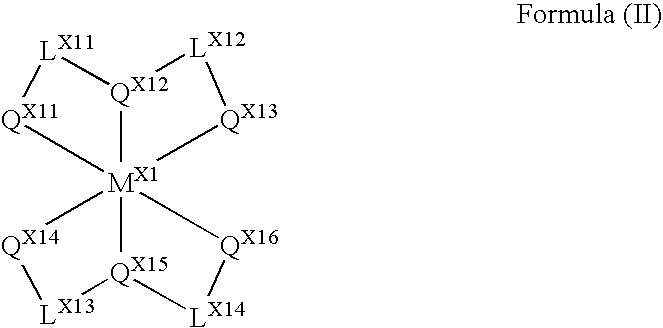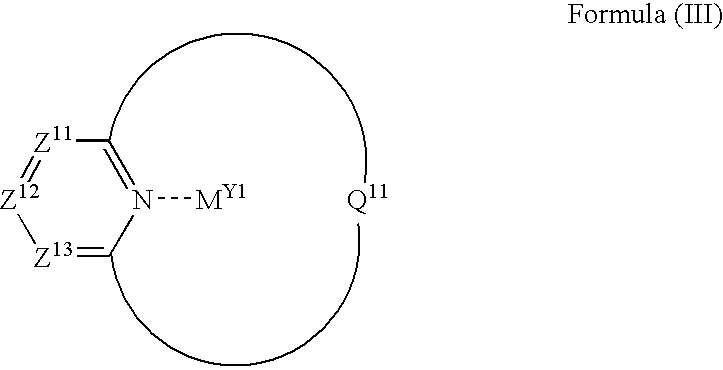Organic electroluminescent device
a technology of electroluminescent devices and electroluminescent dopants, which is applied in the direction of discharge tube luminescnet screens, natural mineral layered products, etc., can solve the problems of insufficient driving durability of the device disclosed in these patents, inability to avoid the deterioration of the luminescent dopant by the carrier, and difficulty in obtaining sufficient driving durability. , to achieve the effect of low voltage, high luminance and efficiency
- Summary
- Abstract
- Description
- Claims
- Application Information
AI Technical Summary
Benefits of technology
Problems solved by technology
Method used
Image
Examples
example 1
[0556] On a 2.5 cm-square glass substrate with a thickness of 0.7 mm, an ITO thin film (thickness: 0.2 μm) was formed as a transparent anode by DC magnetron sputtering (conditions: substrate temperature of 100° C., oxygen pressure of 1×10−3 Pa) using an ITO target having an In2O3 content of 95 mass %. The surface resistance ofthe ITO thin film was 10 Ω / square.
[0557] The substrate having the transparent anode formed thereon was placed in a washing vessel and subjected to IPA washing and then to UV-ozone treatment for 30 minutes. On this transparent anode, copper phthalocyanine was deposited at a rate of 0.5 nm / sec by a vacuum deposition method to provide a hole injecting layer of 10 nm.
[0558] Further, 4,4′,4″-tris(2-methylphenylphenylamino)triphenylamine (m-MTDATA) was deposited on this hole injecting layer at a rate of 0.5 nm / sec by a vacuum deposition method to provide a hole transporting layer of 40 nm.
[0559] Further, the compound H-5, the compound E-3, and a platinum complex E...
example 2
[0579] A luminescent device of Example 2 was obtained and evaluated in the same manner as Example 1, except that the following metal complex EM-2 was used in place of the metal complex EM-1 (luminescent dopant). The results are shown in Table 1 below.
PUM
| Property | Measurement | Unit |
|---|---|---|
| Percent by mass | aaaaa | aaaaa |
| Energy | aaaaa | aaaaa |
| Energy | aaaaa | aaaaa |
Abstract
Description
Claims
Application Information
 Login to View More
Login to View More - R&D
- Intellectual Property
- Life Sciences
- Materials
- Tech Scout
- Unparalleled Data Quality
- Higher Quality Content
- 60% Fewer Hallucinations
Browse by: Latest US Patents, China's latest patents, Technical Efficacy Thesaurus, Application Domain, Technology Topic, Popular Technical Reports.
© 2025 PatSnap. All rights reserved.Legal|Privacy policy|Modern Slavery Act Transparency Statement|Sitemap|About US| Contact US: help@patsnap.com



